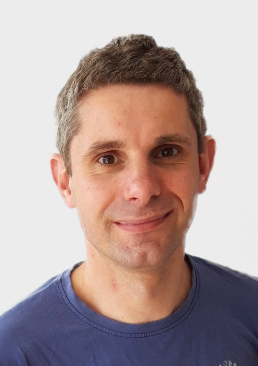Prof Erik Wagenaars
Professor
Visit Prof Erik Wagenaars's profile on the York Research Database to:
- See a full list of publications
- Browse activities and projects
- Explore connections, collaborators, related work and more
Profile
Career
MSc; PhD (Eindhoven); CPhys MInstP
Summary of expertise
- Low-temperature plasmas
- Laser ablation
- Plasma-based thin film deposition
- Plasma diagnostic development
- Technological applications of plasmas
Previous posts
2007-2008: Research Scientist, Fraunhofer Institute for Laser Technology / Philips Extreme UV GmbH, Germany
2008-2011: Postdoctoral Research Associate, University of York
Honours
- High Technology Plasma Processes Young Scientist Award
- Gaseous Electronics Conference Student Award for Excellence
Roles in the School of Physics, Engineering and Technology
- Undergraduate Senior Admissions Tutor
Research
Overview
Research group: York Plasma Institute
Our research activities are presented in the Low-Temperature Plasmas research section of the York Plasma Institute.
Research interests:
- Low-temperature plasmas: atmospheric-pressure plasma jets, low-pressure rf plasmas for etching and deposition
- Laser ablation
- Plasma diagnostics
- Plasma-surface interactions and modifications
- Technological applications of plasmas, including plasma-based thin film deposition
Publications
Full publication list available in the York Research Database.
Research group(s)
Postdoc
- Dr Alexandra Brisset
- Dr Laurent Invernizzi
PhD students
- Mr Eduardo Solis Meza
- Mr James Lolley
- Mr Benjamin Harris
- Mr Matthew Hill
Former PhD students
- Dr Andrew West - PDRA University of Manchester
- Dr Sudha Rajendiran - PDRA Research Centre for Gas Innovation (Brazil)
- Dr David Shaw - PDRA University of York
- Dr David Meehan
- Dr Joe Branson - Teaching Fellow University College Dublin
Grants
- ‘TiPToP - TaIlored Pulse excitation for TailOred Plasma chemistries’ EPSRC funded.
Collaborators: James Walsh and Mohammad Hasan, University of Liverpool
Available PhD research projects
Self funded positions available
Tailoring plasma chemistry of cold atmospheric-pressure plasmas
Plasma technologies already form a key part of many of today's multi-billion pound industries such as the nanoscale fabrication of microprocessors, energy efficient lighting, production of solar cells and the deposition of advanced functional coatings. Underpinning the effectiveness of these essential technologies is the unique non-equilibrium environment created within the plasma; including a mix of reactive neutral particles, ions and energetic electrons. Many applications rely on the synergistic interaction between the mix of species created in the plasma and a sample surface; however one of the fundamental challenges in plasma science is tailoring the mixture of reactive plasma species such that they have the desired effect on a target.
Novel cold atmospheric-pressure plasmas can operate into open air, remain at room temperature, and still have the selective desired reactivity characteristics. They have many novel applications ranging from plasma medicine to adhesion enhancement of plastics to green chemistry. As with many plasma applications, key for the effectiveness of these devices is the plasma chemistry, ie exactly what mix of reactive species are delivered to a substrate by the plasma.
The chemistry in these plasmas is largely controlled by the electrons; more precisely the distribution of energies that the electrons have. Different electron energy distribution functions (EEDF) drive differences in the plasma chemistry and therefore in the observed effect on a surface, making the EEDF, and especially control over the EEDF of key importance.
Compared to traditional low-pressure plasmas, atmospheric-pressure plasmas are generated at much higher pressure (in open air), meaning there are many more collisions between plasma particles, severely hindering existing low-pressure EEDF control methods. This project aims to take advantage of a newly developed extremely agile high-voltage pulsed power technology, in which pulse characteristics such as rise time, duration and repetition rate can be varied by the user. With this flexibility, the electrical excitation of the discharge can be used to modify the EEDF and therefore control and tailor the plasma chemistry of the APP. Sophisticated (laser-based) plasma diagnostics and numerical modelling will enable us to understand the underpinning mechanisms of the observed changes in chemistry for different pulse shapes. Air-based chemistries, in particular reactive species such as OH, NO, O3, O and N play key roles in many applications and are the focus of this project.
Controlling selective formation of free radicals in cold atmospheric-pressure plasmas
Non-equilibrium plasma technology underpins many high-tech industries such as nanofabrication of computer chips, deposition of advanced functional coatings and production of solar cells. At the heart of these technologies is the non-equilibrium environment in these plasmas, producing a mix of radical atoms and molecules at low temperature that are then used in the applications. In particular, cold atmospheric-pressure plasmas (APPs) have gained significant interest over recent years because they can operate into open air, remain at room temperature, and still have the selective desired reactivity characteristics. They have many novel applications ranging from plasma medicine to green chemistry and food safety.
One of the main challenges in this field is the fact that the mix of radicals changes between the plasma where it is produced and the surface where the reactions for the application happen. Short-lived, highly-reactive radicals that are created inside the plasma react to form longer-lived species downstream from the plasma. It is not just the chemistry inside the plasma that needs to be understood and controlled, importantly the processes occurring between the plasma and the surface need to be taken into account as well. In addition, it is nearly impossible to create a single radical species in a plasma, there is always a mix of different radicals, limiting the selectivity of the induced reactions, making it hard to design optimal plasma parameters for applications.
This project focuses on developing devices that deliver a single radical species to a surface, enhancing reactions selectivity and enabling a superior control of the intended reaction. These systems are very well-controlled which means the underpinning plasma reaction and transport mechanisms can be studied and understood in detail, providing critical information for the design of efficient plasma sources for applications.
In particular, this project takes a novel approach and aims to use so-called mediator molecules to harvest the different short-lived radicals from the plasma and create a single, stable radical species that will be transported to the surface. Radical species and densities will be characterised using sophisticated (laser-based) plasma and radical diagnostics. With this technology, a well-controlled radical flux can be produced, enabling studies into the reaction pathways underpinning applications in plasma medicine and food safety.
Teaching
Undergraduate
- Stage 2: Experimental Laboratory II
- Stage 4: Light and Matter: Lasers and Atom-Light Interactions
- BSc Projects: current topics in low-temperature plasma and laser-plasma science and technology
- MPhys Projects: current topics in low-temperature plasma and laser-plasma science and technology
Postgraduate
- MSc Projects: current topics in low-temperature plasma and laser-plasma science and technology
External activities
Memberships
- Member of Institute of Physics
- Fellow of the Higher Education Academy
- Chair of the Institute of Physics Ion and Plasma Surface Interactions Group Committee (2021-present)
- Member of the International Scientific Committee of the Europhysics Conference on Atomic and Molecular Physics of Ionized Gases (2016-present)
- Member of Scientific Committee of the annual Workshop on the Exploration of Low Temperature Plasma Physics (2012-present)
- Chair of the local organising committee for the 11th Technological Plasma Workshop 2013
Invited talks and conferences
Invited talks
- 73rd Gaseous Electronics Conference, online, 2021.
- 47th European Physical Society Conference on Plasma Physics, online, 2021.
- 6th Plasma Science and Entrepreneurship Workshop, Luxembourg, 2019.
- 59th Annual Meeting of the APS Division of Plasma Physics, Milwaukee (USA), 2017.
- International Conference on Phenomena in Ionized Gases, Lisbon (Portugal), 2017.
- International Conference on Plasma Surface Engineering, Garmisch-Partenkirchen (Germany), 2016.
- Functional Thin Films, Coventry (UK), 2016.
- International Conference on Atomic Processes in Plasmas, Paris (France), 2016.
- IUVSTA Workshop, Braga (Portugal), 2015.
- Institute of Physics Plasma Physics Conference, Milton Keynes (UK), 2015.
- Gordon Research Conference Plasma Processing Science, Smithfield (USA), 2014.
- Mathematical Sciences Seminar, Loughborough University (UK), 2014.
- International Symposium on Laser Aided Plasma Diagnostics, Madison (USA), 2013.
- Atomic, Molecular and Optical Physics Seminar, Durham University (UK), 2013.
Performances
Outreach activities
- Public lecture "Everyday plasmas", PhysSoc, York, 24 February 2015.
- School outreach event, "Science Week", Applegarth Primary School, Northallerton, 20 March 2015.

School of Physics, Engineering and Technology
University of York
Heslington
York
YO10 5DD
U.K.erik.wagenaars@york.ac.uk
Tel: +44 (0)1904 324904
Fax: +44 (0)1904 322214
Room: GN/010, York Plasma Institute

